In the world of gemstones, blue diamonds and sapphires are similar to distant cousins; both have enticing blue hues that have mesmerized people for generations, but each has its own unique set of secrets.
Because of their comparable colors, they may appear pretty similar at first glance. Still, as you learn about these two stones’ origins, characteristics, and historical and cultural functions, they become as different as night and day.
They come from many mineral families and have traveled in various geological ways to reach the Earth’s surface. Its scarcity and the legends they bear add to the intrigue and allure that have stoked mankind’s interest in these gems.
In this article, we’ll explore the intriguing differences and similarities between blue diamonds and sapphires.
We’ll uncover the mysteries behind their stunning colors, investigate their unique paths to form beneath the Earth’s crust, and discover why they’ve been treasured throughout the ages!
Blue Diamond vs. Sapphire – The Major Differences
The first thing we should do is talk about what makes them different. When you put these gems next to each other, their differences will stand out.
Appearance – Sapphire is more opaque
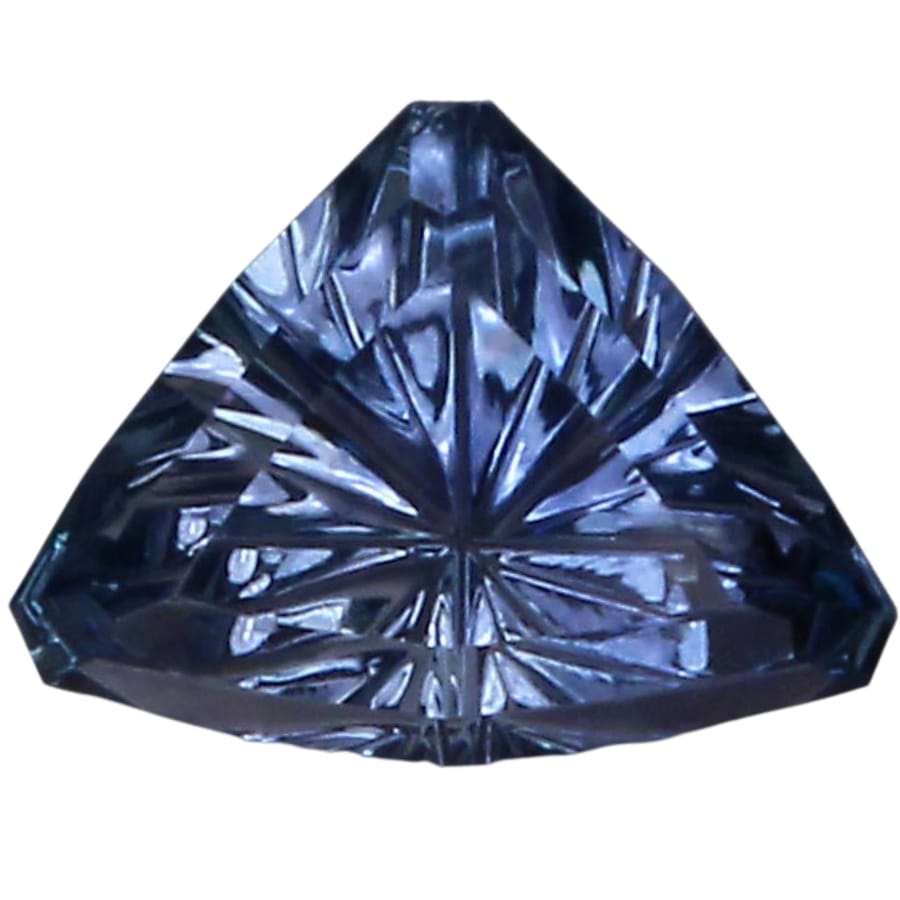
Even though they might not seem different at first glance, the differences in how blue diamonds and sapphires look are very important. Blue diamonds have a shimmer that is all their own.
These special effects make them sparkle and shine like metal, which you can see even more clearly in direct light. Their color can be anything from a light sky blue to a dark steel blue, and the value increases as the color gets darker.
Sapphires are not as bright as diamonds but shine with a deep, rich color. While most people think of sapphires as being a deep, velvety blue color, they can also come in lighter, more clear forms.
Sapphires, on the other hand, may show asterism (the star effect) or color zoning, which means that different colors or shades can be seen in different parts of the stone.
Chemical Composition – Blue diamonds are composed of carbon atoms
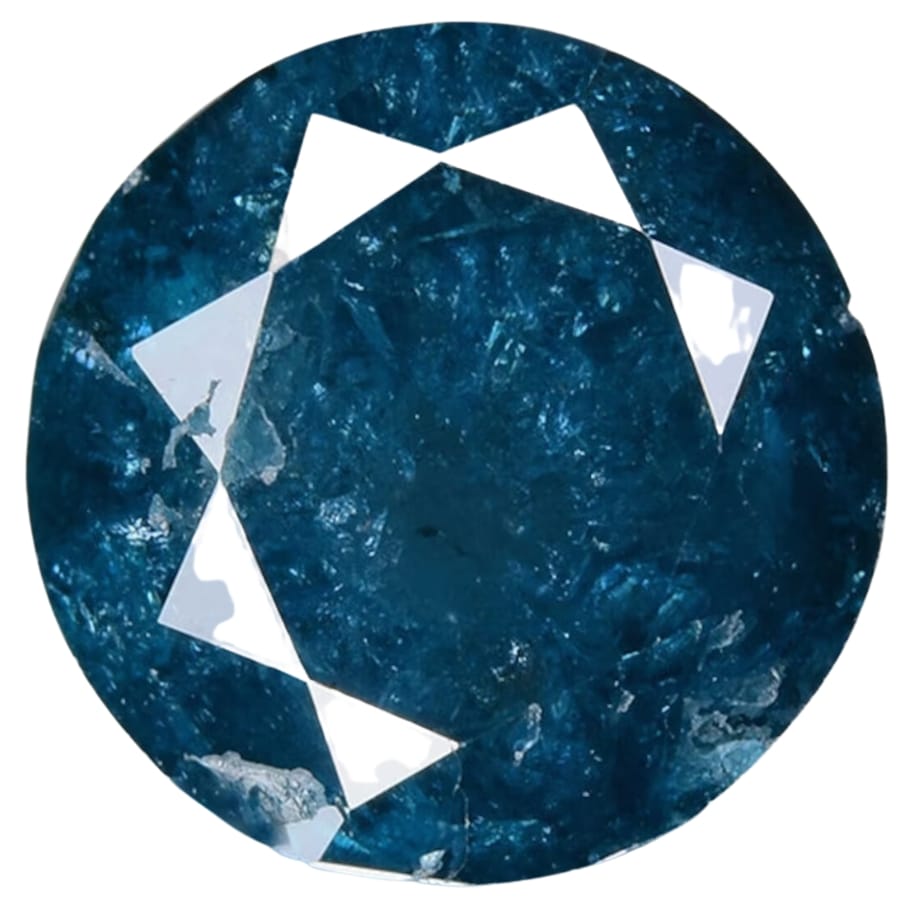
Blue diamonds and sapphires are very different from each other when you look at their chemical makeup. Blue diamonds are mostly made up of one thing: carbon.
The structure of a diamond is made up of carbon atoms arranged in a solid tetrahedral lattice. This makes the crystalline structure that makes diamonds so hard.
The beautiful blue color of these diamonds comes from tiny amounts of boron in the crystal structure. When boron atoms join the diamond’s lattice, they give up extra electrons that soak up red, green, and yellow light and reflect a beautiful blue color.
Sapphires are minerals in the corundum family, and most are made up of aluminum oxide (Al2O3). The different colors in sapphires are caused by tiny impurities that are present.
In particular, the color of a classic blue sapphire comes from iron and titanium included in the stone. When tiny amounts of titanium and iron are added to the crystal lattice of a sapphire instead of aluminum, they absorb light in the red and green wavelengths, giving the stone its deep blue color.
Cleavage – Sapphire has no cleavage
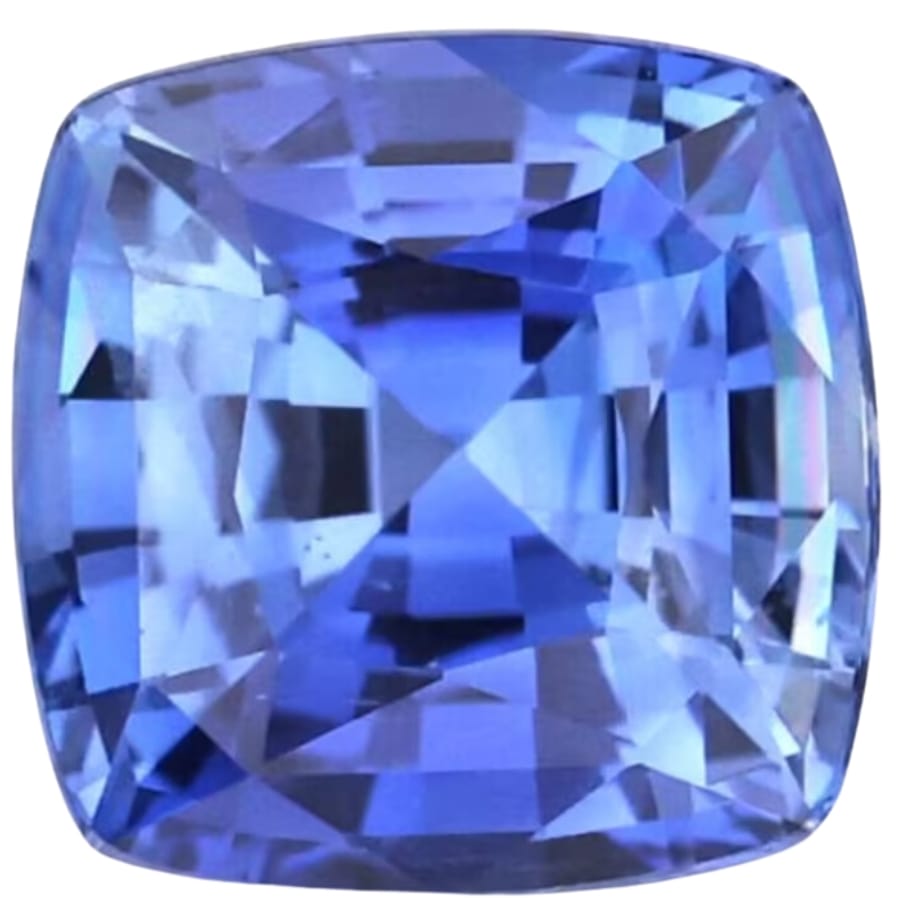
Blue diamonds and sapphires differ greatly in cleavage, which is the tendency of crystalline materials to split along particular structural planes based on the arrangement of atoms in their crystal lattice.
Perfect cleavage can be seen in all four directions in blue diamonds. This characteristic results from the arrangement of the carbon atoms in the diamond’s crystal structure, which makes it very simple to break the crystal cleanly in specific directions.
As a result of this property, which is essential to cutting diamonds, all diamonds, including blue ones, must be handled carefully since a decisive blow in the right direction might cause them to cleave or split.
In contrast, sapphires lack cleavage planes. They are a corundum mineral family member, distinguished by their robust and stable crystal structure.
Sapphires typically fracture in a conchoidal or splintery way rather than cleaving. Compared to diamonds, sapphires are more resilient to shattering from impact due to the lack of cleavage.
Moreover, cutting sapphires necessitates unique methods that rely more on abrasion than carefully separating the stone.
This difference in cleavage impacts the processing and handling of these gemstones and their durability in various contexts, notably jewelry, where the risk of impact is higher.
Density – Blue diamond has lower density
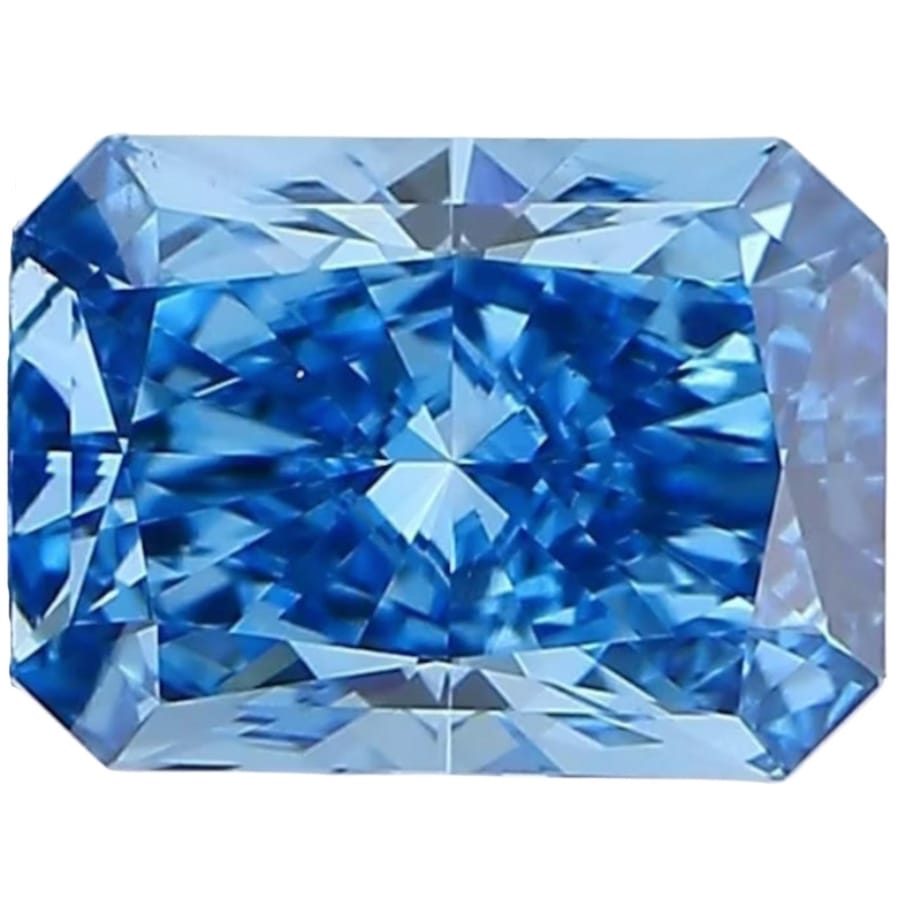
Density is a crucial characteristic that gemologists use to identify and distinguish between different stones since it can reveal information about the composition and structure of a gemstone.
Due to their carbon-based structure, all diamond variations have a roughly 3.5 grams per cubic centimeter (g/cm3) density, including blue diamonds.
The diamond’s crystal lattice’s strong, compact arrangement of carbon atoms results in its comparatively high density, which adds to the stone’s overall weight and feel.
Sapphires have a somewhat higher density than other minerals, with a range of 3.95 to 4.03 g/cm3 and a main composition of aluminum oxide with other trace elements.
The atomic configuration and molecular weight of the constituent elements of corundum, the mineral family to which sapphires belong, cause this discrepancy.
Corundum is a denser substance than diamonds due to heavy elements like aluminum and the unique way atoms are packed in the corundum crystal structure.
Hardness – Sapphire is softer
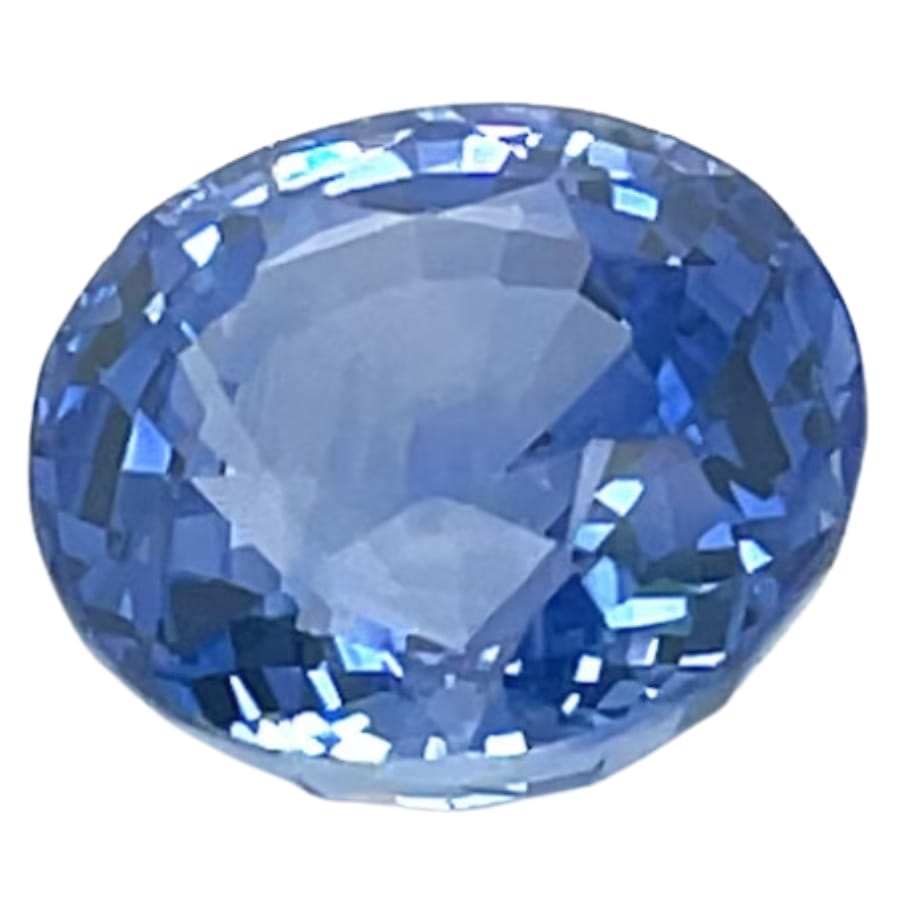
While manufacturing jewelry, a gemstone’s hardness is crucial since it determines how resistant it is to wear and scratches. While being similarly hard, blue diamonds and sapphires are different in this regard.
The hardest known natural substance is a blue diamond, which receives a perfect 10 on the Mohs scale of mineral hardness.
The diamond’s extraordinary hardness is due to the covalent bonding between carbon atoms in its crystal lattice, which forms a tetrahedral network of atoms that is very challenging to separate or scratch.
Beyond their aesthetic appeal in jewelry, this feature makes them resistant to scratches and very sought for industrial uses, like drill bits and cutting tools.
The third hardest mineral known to man after diamond and moissanite, sapphires are renowned for their hardness, scoring a 9 on the Mohs scale.
Because sapphires are made of corundum (aluminum oxide), which has strong and brief oxygen-aluminum connections inside their crystal lattice, they are extremely durable and virtually as resistant to scratches as diamonds.
Even if a diamond can scratch them, sapphires’ practical hardness makes them strong enough for daily use and adaptable in various industrial applications.
Location – Blue diamonds are only found in few locations
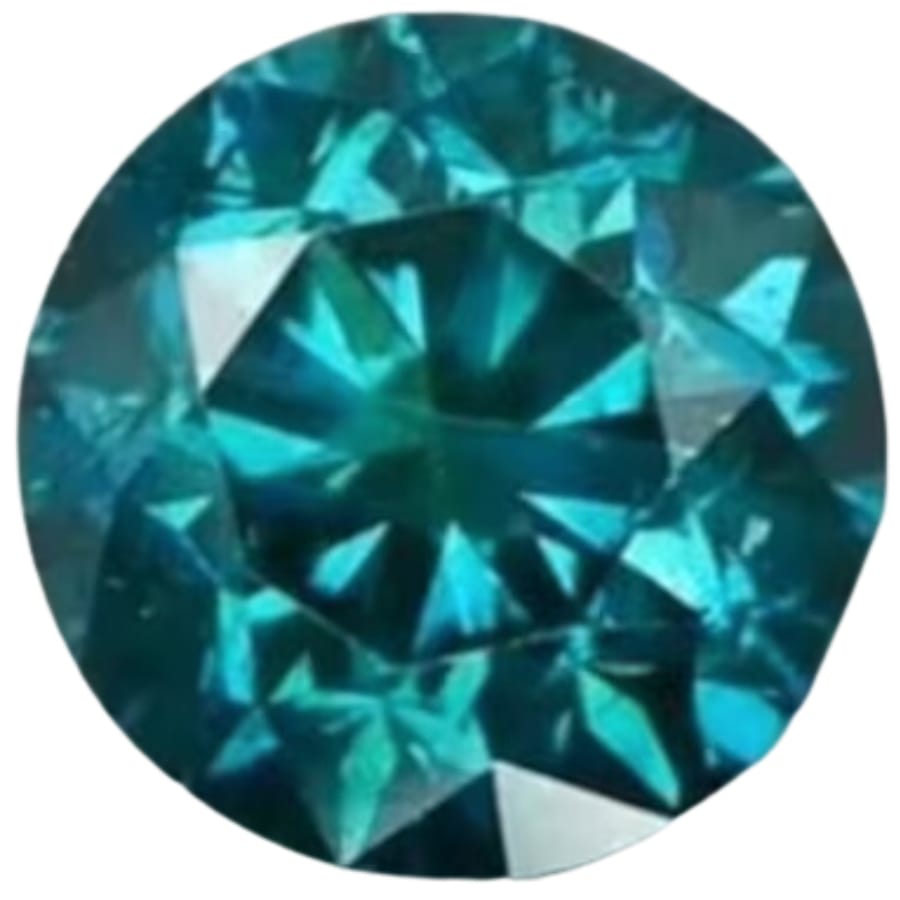
The locations where these rocks are found can provide information about their past. These are the best rockhounding locations to seek for blue topaz and sapphire, which is fascinating to discover!
Blue diamonds and sapphires have a diverse range of geographic origins from around the world, each having special geological circumstances that aid in forming these priceless stones.
The small number of places where blue diamonds can be found reflects their rarity. The Cullinan Mine near Pretoria, South Africa, and the Argyle Mine in Western Australia stand out.
The most unique and sought-after blue diamonds worldwide are produced in these mines, which are well-known for doing so.
Diamonds are among the rarest and most expensive jewels in the world because of the highly specialized conditions needed for their production, especially those with the unusual blue hue caused by boron impurities.
Luster – Sapphire has a vitreous luster
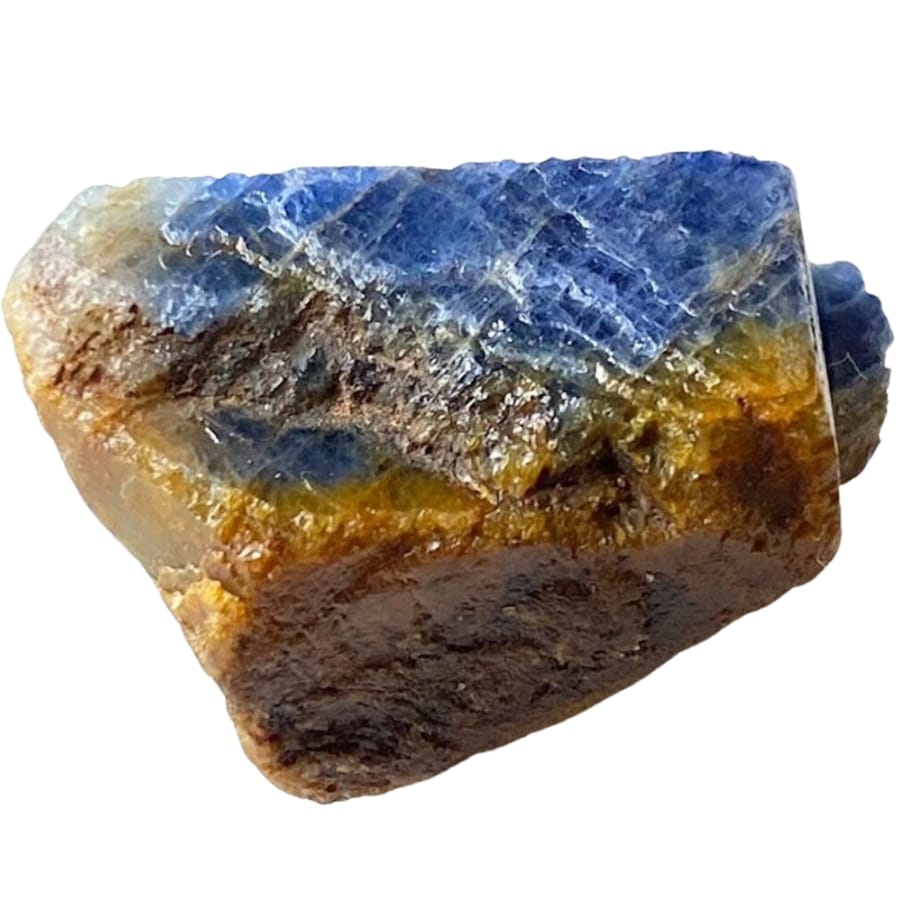
The term “luster” describes how light interacts with a gemstone’s surface, affecting how appealing it is to the eye and how brilliant it appears.
Even though both blue diamonds and sapphires are prized for their brilliance, they have very different lusters because of their distinctive optical characteristics and crystal structures.
The maximum level of sheen attainable in a gemstone, “adamantine” luster, is present in blue diamonds. Its name, which alludes to the diamond’s extraordinary toughness, is derived from the ancient Greek word “adamas,” which means invincible.
The high brilliance and glittering, mirror-like surface of adamantine luster give it its distinctive ability to brilliantly reflect and refract light.
Sapphires have a “vitreous” to “subadamantine” shine similar to glass or resin. As a result, they have a softer, more muted shine than diamonds do when reflecting light.
Sapphires make up for their lack of the dazzling brilliance of diamonds with rich, deep colors and a silky sheen, which are especially noticeable in favorable lighting situations.
Corundum, the mineral that makes up sapphires, and diamond have different optical properties, notably differing refractive indices and methods of light dispersion, which account for this disparity in shine.
Price – Blue diamonds can fetch millions
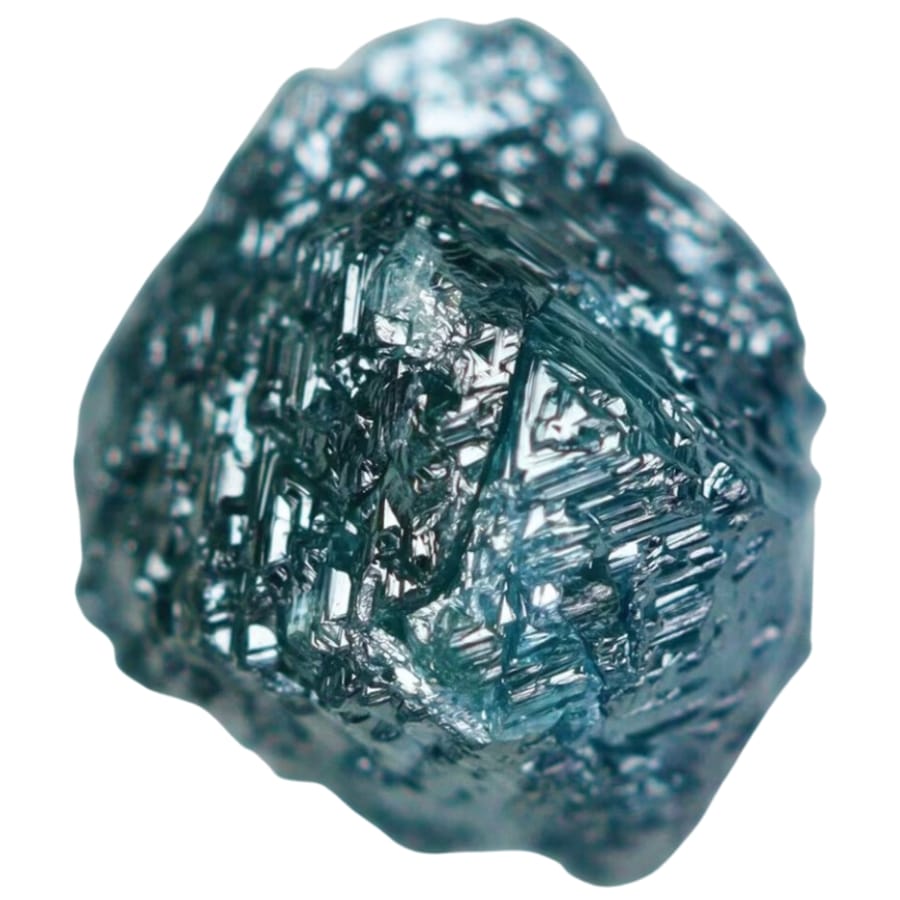
Blue diamond and sapphire price points vary widely, depending on the stones’ rarity, demand, and inborn characteristics. Given its rarity as one of the world’s most valuable jewels, blue diamonds’ prices have reached astounding heights.
Blue diamonds are extremely rare because they are one of the few that contain the trace element boron, giving them their blue color.
Depending on the quality of the cut, clarity, carat weight, and color, they can cost anywhere from tens of thousands to millions of dollars per carat. The most expensive blues are the “Fancy Vivid,” or intense, vibrant blues.
Sapphires are a preferred gemstone for jewelry because, despite being treasured and beautiful, they are typically more affordable.
The price of sapphires varies according to their color, clarity, size, cut, and general quality, with those from Kashmir prized for their velvety, rich blue tone, commanding the highest prices.
But even the best sapphires are often less expensive per carat than blue diamonds. Depending on quality, sapphires can cost hundreds to thousands of dollars per carat, however, they are rarely as expensive as blue diamonds.
Sapphire vs. Blue Diamond- The Similarities
Some of their factors are the same, even though they are different. It’s more interesting to look at gems when you know what these stones have in common.
Color – Both sapphire and blue diamond have a range of blue hues
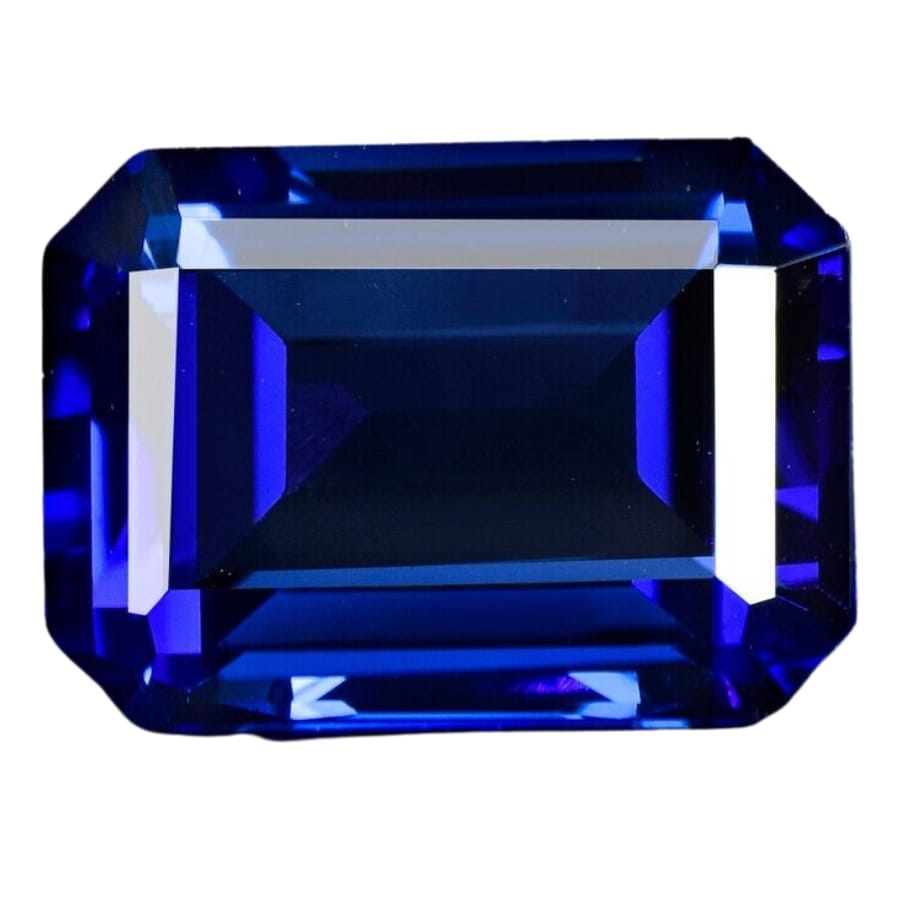
The source of their colors and the variety of blue tones found in each stone are characteristics that merge both resemblance and diversity.
Blue sapphires and blue diamonds both have fascinating blue hues that serve as their distinguishing characteristics.
The color of blue diamonds is caused by traces of boron in the crystal structure. Boron contributes a variety of blue hues, from a light sky blue to a more powerful deep ocean blue.
The richness and purity of a blue diamond’s color determine how valuable it is; the most valuable stones exhibit a bold, vivid blue.
Due to the presence of both titanium and iron impurities in corundum, sapphires are distinguished by their distinctive blue color.
Sapphires can range in color from a pale, delicate blue to a rich, deep royal blue. The most sought-after sapphires, especially those from the renowned Kashmir mines, have a brilliant, deep blue color that is frequently referred to as “cornflower blue.”
Conductivity – Blue diamond and sapphire are good insulators
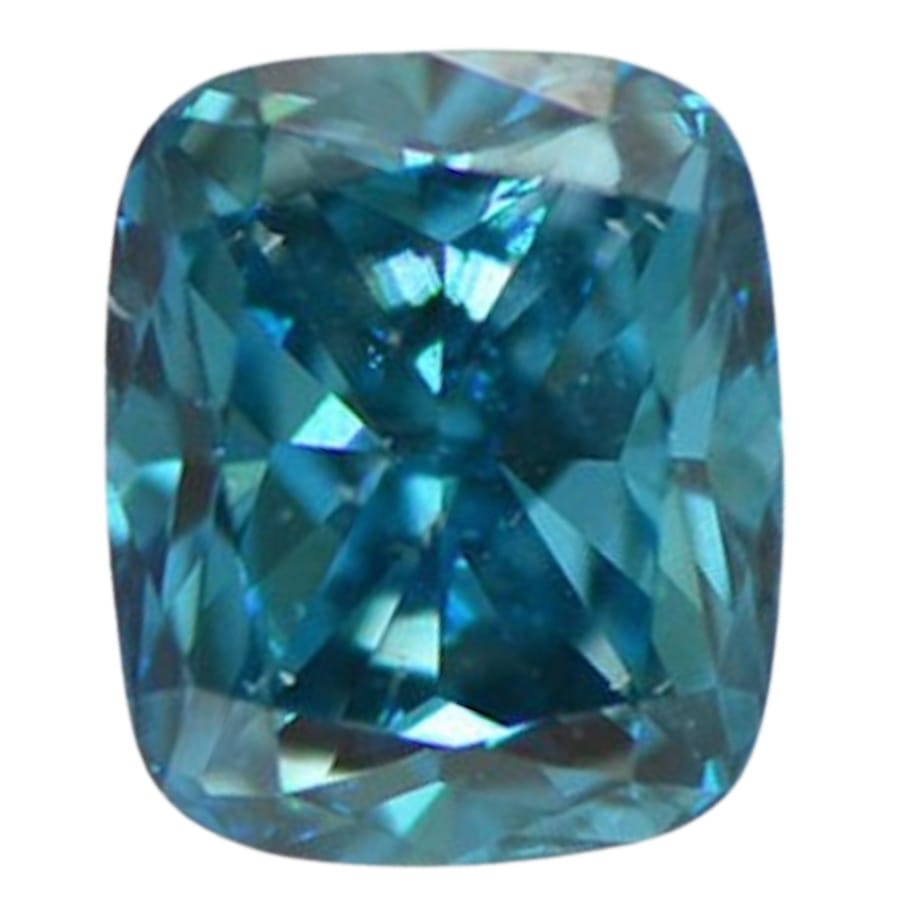
Due to their distinctive chemical and structural characteristics, electrical conductivity in blue diamonds and sapphires shows certain parallels and differences.
Beyond their visual appeal, both of these gemstones are used in a variety of industrial applications, where their conductive qualities are crucial.
As boron functions as a p-type semiconductor, it is principally responsible for the conductivity of blue diamonds, which are naturally occurring semiconductors.
At specific temperatures, the diamond’s conduction band can conduct electricity thanks to the boron atoms’ donation of holes (positive charge carriers).
Aluminum oxide-based sapphires are normally insulators but occasionally show semiconducting characteristics. The conductivity of sapphires can be changed by doping them with impurities like chromium or iron.
Pure sapphires, however, are typically non-conductive. In high-performance electronics, they are frequently employed as insulating substrates, particularly in uses that call for toughness, heat resistance, and electrical insulation.
Formation – Sapphire and blue diamond both form in high-pressure environments
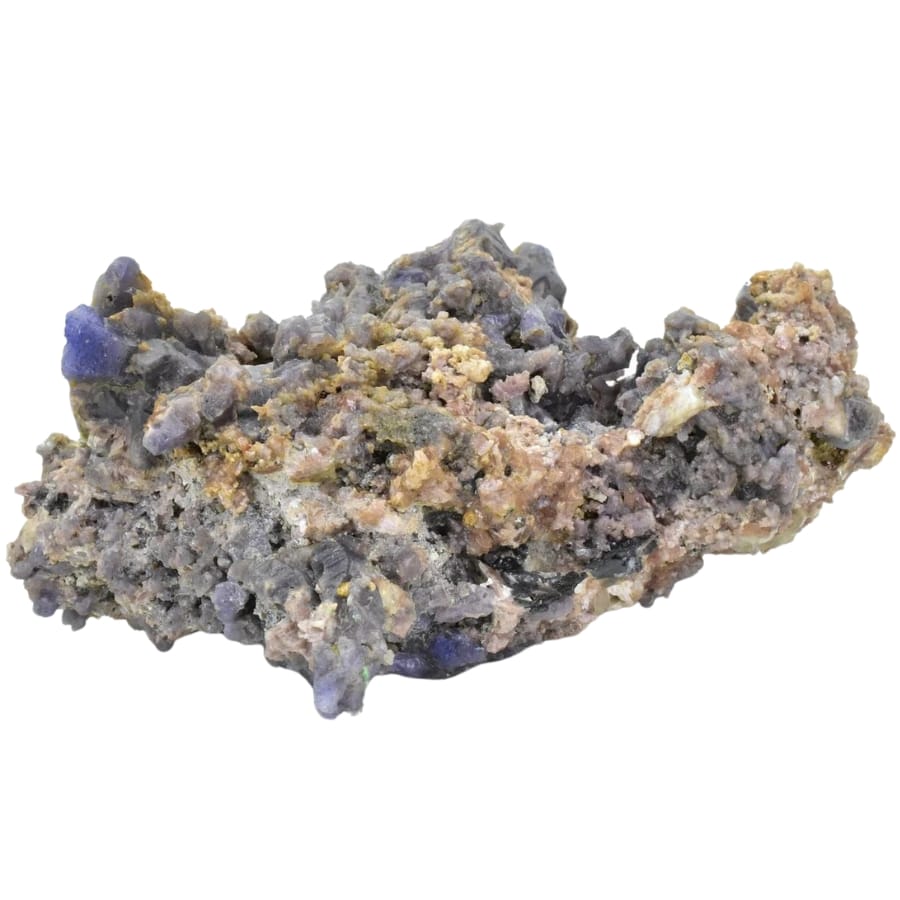
Despite their differences, blue diamonds and sapphires have certain similarities in the geological conditions under which they naturally originate in the Earth’s crust.
Although while each stone undergoes these processes differently, they all require high pressures, temperatures, and the presence of particular elements, indicating how dynamic Earth’s geology is.
Around 150 kilometers below the surface of the Earth, deep within the mantle, blue diamonds are formed.
They are delivered to the surface by deep-source volcanic eruptions through magma conduits known as kimberlite pipes from high-pressure, high-temperature environments.
Due to minute amounts of boron that were trapped in the diamond’s crystal structure during creation, the hue is blue. Because to the extreme rarity of these characteristics, blue diamonds are uncommon and expensive.
Corundum, the mineral that makes up sapphires, can occur in a number of geological settings. They are frequently discovered in metamorphic rocks like schist and marble as well as igneous rocks like syenites and pegmatites.
In alluvial deposits, sapphires are also present and come from the erosion of hard rock formations. They are blue because to traces of iron and titanium impurities.
Unlike diamonds, sapphires form closer to the Earth’s surface, usually in areas where there is tectonic or volcanic activity that results in high temperatures and pressures.
Fluorescence – Both blue diamond and sapphire exhibit fluorescence
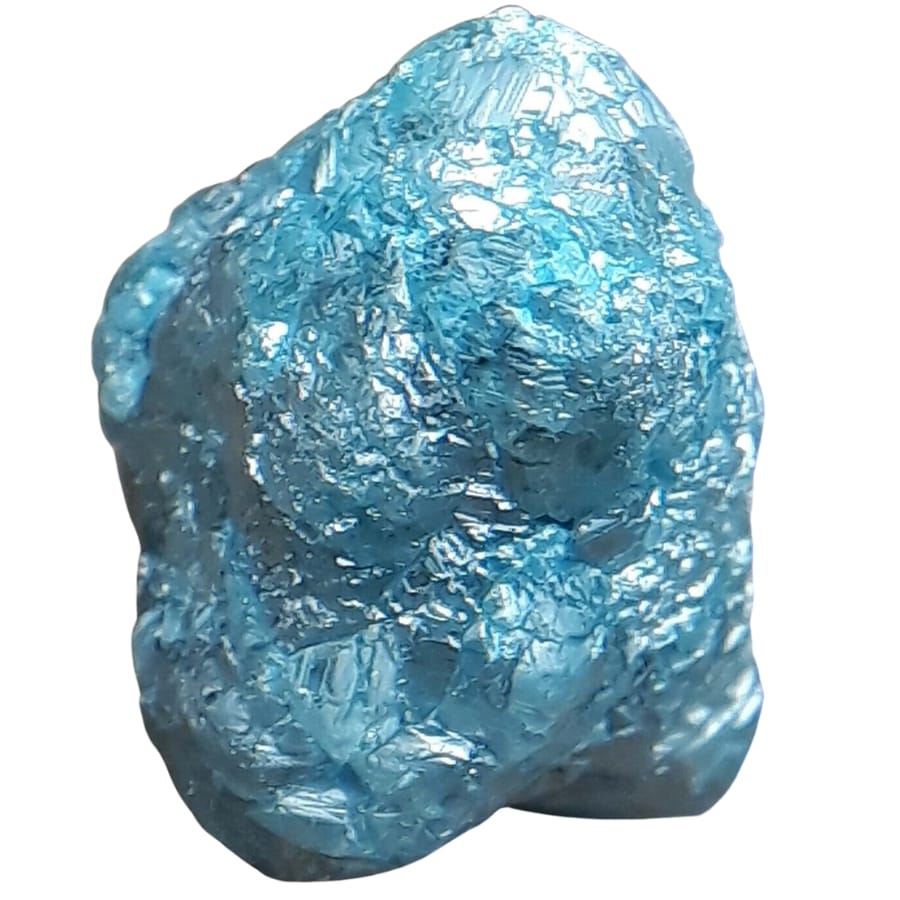
Both blue diamonds and sapphires exhibit fluorescence, a phenomenon in which a material absorbs ultraviolet (UV) light and then reemits it at a different wavelength, albeit it does so in varied ways depending on the structural and chemical characteristics of each stone.
Fluorescence is a characteristic of blue diamonds that is frequently observed under UV light as a blue glow, however the color might vary.
This happens as a result of nitrogen atoms or other lattice flaws in the crystal structure of the diamond, which absorb UV energy and release it as visible, and frequently extremely brilliant, light.
The presence of boron, which gives the diamond its blue hue, is interestingly known to quench fluorescence, which means that some blue diamonds may have weaker fluorescence than their colorless counterparts.
Although less frequent and less powerful than in diamonds, fluorescence can also be seen in sapphires.
When fluorescence is present, it typically results from trace elements like iron or titanium and typically appears as a red or orange glow when exposed to UV light. This is especially noticeable in sapphires from specific regions, such as some stones from the Sri Lankan area.
Magnetism – Neither Sapphire nor Blue Diamond are magnetic
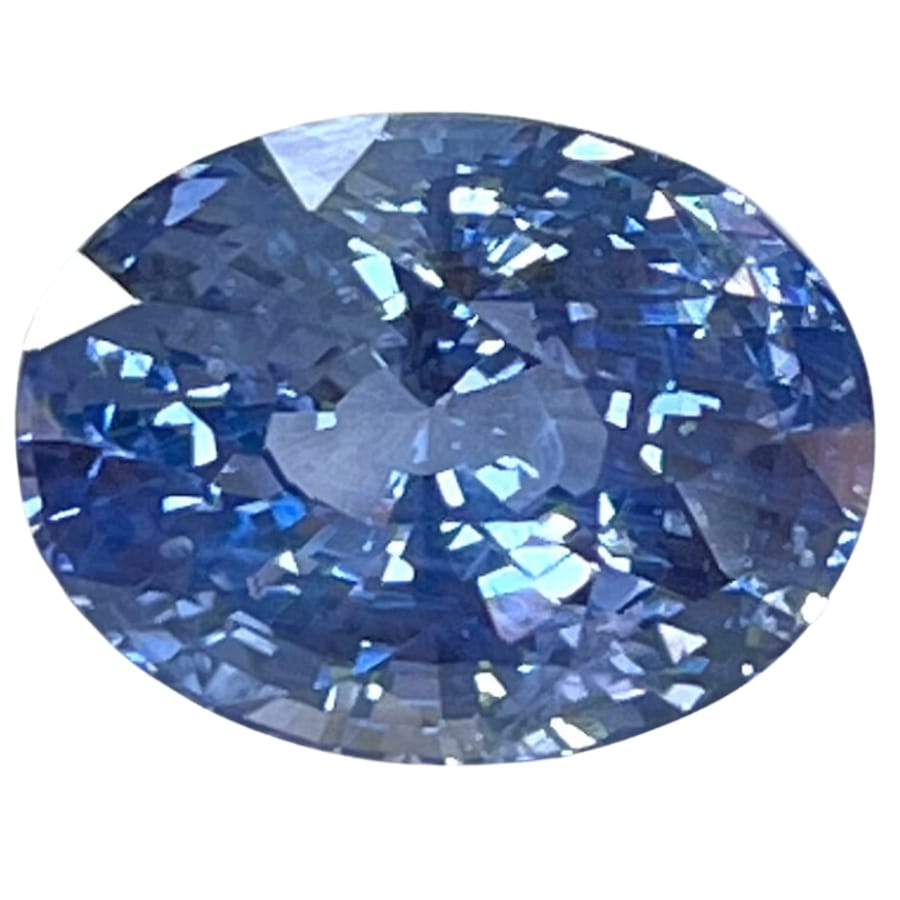
Due to their crystal shapes and chemical compositions, blue diamonds and sapphires both display minimal to no magnetic properties, placing them similarly in the context of magnetic response.
The carbon atoms in blue diamonds, like those in all other diamonds, are organized in a crystal lattice.
Diamonds that are completely free of any impurities or flaws are diamagnetic, which means that when a magnetic field is applied externally, they create a faint magnetic field in opposition to it but lose their magnetization when the field is withdrawn.
Nonetheless, certain impurities or structural flaws in diamonds can introduce very small paramagnetic properties, causing the substance to exhibit weak magnetic qualities in an external magnetic field.
The small levels of boron in blue diamonds that give the gem its color can cause very slight electrical changes that could impact magnetic characteristics, but the effect is often insignificant.
Like diamonds, sapphires are essentially composed of aluminum oxide and frequently have diamagnetic characteristics.
They lack unpaired electron components that would contribute to the ferromagnetic or paramagnetic behaviors, which are traits of materials that respond strongly to magnetic fields.
Although any resulting magnetism is typically mild and difficult to detect without sophisticated instrumentation, impurities or dopants in sapphires, such as iron, titanium, or chromium, can impact their magnetic characteristics.
Streak – Both Blue Diamond and Sapphire have a white streak
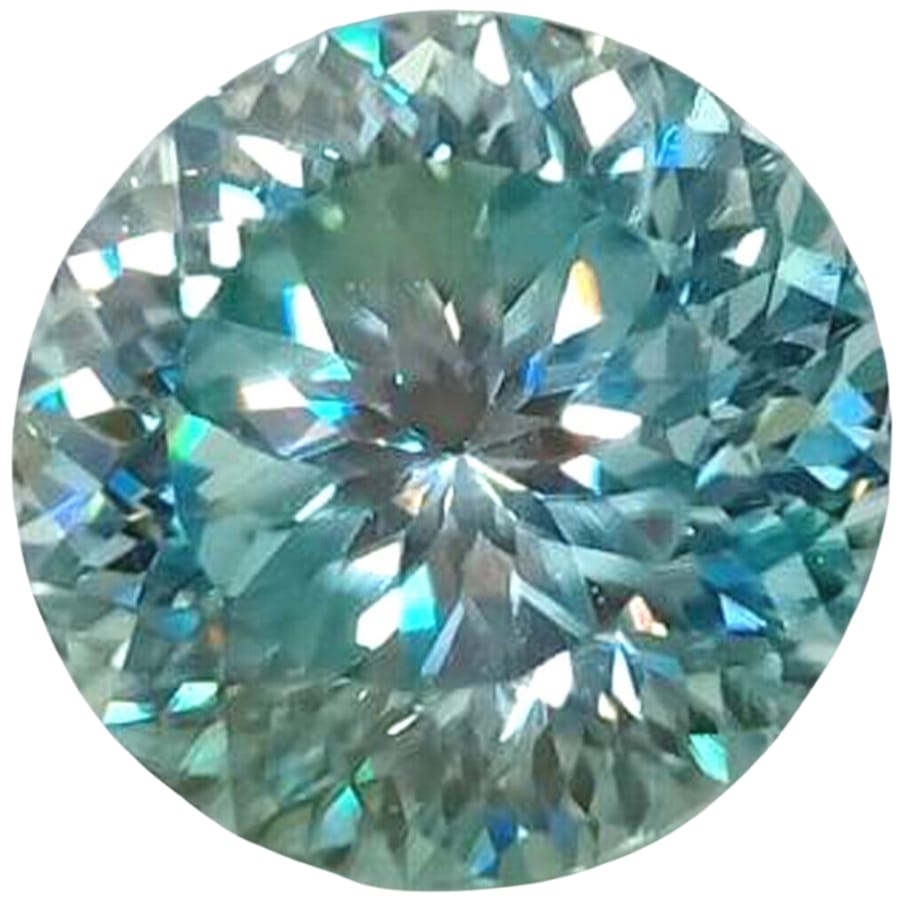
The color of the powder that a mineral leaves behind when it is rubbed against a streak plate, or, in less technical terms, the color of its “crushed up” form, is referred to as a mineral’s “streak” in the field of gemology.
This property is crucial for identifying minerals because the streak color doesn’t change despite fluctuations in the color of the actual gemstone caused by impurities or radiation exposure.
Regarding their streak, sapphires and blue diamonds have something in common: both leave a white streak. The color of the streak they create does not match the beautiful blue hue they may have on the outside.
White streaks are a common characteristic of minerals that are tougher than the streak plate, typically porcelain, and are left behind by blue diamonds, comprised of carbon.
This is because these minerals produce a white streak by actually removing material from the streak plate itself, rather than leaving a streak of crushed-up material.
Similar to rubies, sapphires also leave a white streak because they are a variety of corundum (aluminum oxide).
Sapphires are harder than the streak plate, just like diamonds, therefore they leave no colored powder behind but rather scrape the plate, leaving a white streak.
The Easiest Ways To Tell Blue Diamond and Sapphire Apart
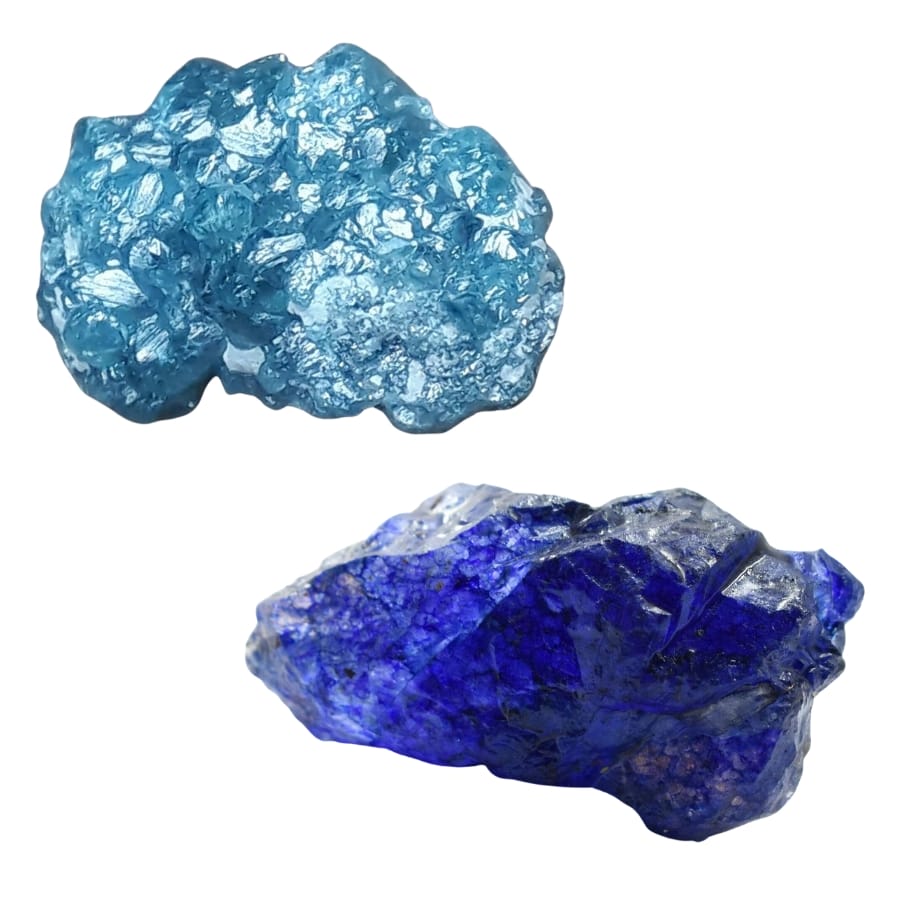
Multiple ways exist to tell the difference between blue topaz and sapphire. Figuring out what makes them special is fun. You should know that even though they look the same, they are different in many ways.
Check the sparkle
Diamonds have a special kind of sparkle that gemologists call “fire.” It’s how light breaks into all the colors of the rainbow when it passes through a diamond. If you look at a blue diamond and see lots of different colors flashing, you’re seeing that fire.
Sapphires are beautiful in their own right, but they don’t break light similarly, so they won’t have that rainbow sparkle. Instead, they have a more straightforward shine and sparkle that stays blue.
Test the hardness
Diamonds are the hardest natural material on Earth. They’re so hard they can scratch glass or metal without hurting themselves. Sapphires are strong, ranking just below diamonds but still not as tough.
If you have a loose gemstone and a piece of glass (and permission!), you can try lightly dragging the stone across the glass. If it leaves a scratch, you could have a diamond. If not, it’s likely a sapphire. But remember, this test can damage the stone and glass, so it’s not recommended unless the gem is scratched or chipped.
Observe the color closely
Both gems are blue, that’s true, but the kind of blue is different. Blue diamonds are often a steely, lighter blue and might even look slightly gray.
On the other hand, Sapphires are usually a more pure blue, ranging from light blue to very dark blue. The most valuable sapphires are a vibrant, medium blue. So, if the gem is a very bright, rich blue, you’re probably looking at a sapphire.


